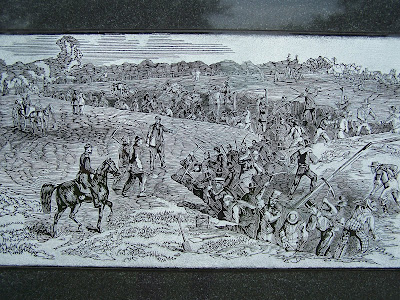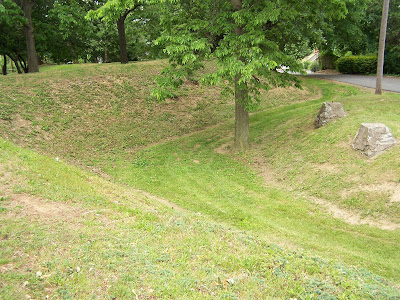When nearby Fort Washington was occupied, it became evident that this higher ground one-half mile to the west, if captured, would make Fort Washington undefendable. The earthworks visible here are the remains of Fort Couch, built in June 1863 as an advance position to ensure the defense of the larger fort to the east. Most of the construction of Fort Couch was done by railroad crews, many of whom were African-Americans. Artillery pieces were mounted on wooden platforms behind the earthworks. Fort Couch is the only public site that preserves part of the once extensive defenses of Harrisburg. A Pennsylvania Historical and Museum Commission historical marker and a monument erected by the Camp Curtin Historical Society commemorate the fort."
This monument has detailed maps, sketches, and summaries of the events surrounding it. Thus, captions on my part are not necessary. The folks of the Camp Curtin Historical Society have done a great job with this monument and maintaining the site. (Click any picture to enlarge to read text.)












A lot of the workers who constructed forts Couch and Washington in Lemoyne were refugees from the Shenandoah and Cumberland valleys, including what some estimates were 1800 free blacks who fled as the Rebels advanced. There were also a series of earthworks connecting the forts, which were designed to protect the Cumberland Valley Railroad Bridge and the Camelback Bridge.
ReplyDeleteSimilar trenches were constructed at Wrightsville, and across the river in Columbia were two forts, Fort Case and the Grubb's Ridge Bastion. Nearly 1,000 Lancaster Countians constructed these earthworks at the same time as Harrisburg was building their forts. Absolutely nothing is left of the forts or works at either Wrightsville or Columbia.